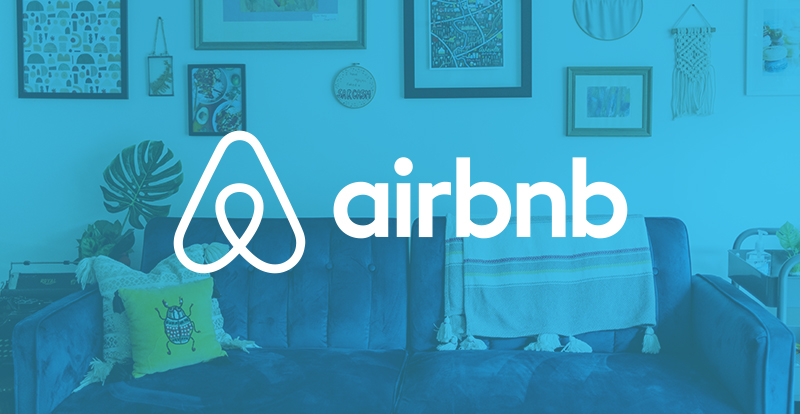A brand content strategy aims to create content that is directly linked to a brand. The goal? Valuing your brand.

What you have to keep in mind about brand content
What is brand content?
Brand content is a marketing strategy that involves creating and spreading content on a brand so that it can be present on the public sphere. Unlike content marketing, with which it often gets mixed up, brand content explicitly puts some aspects of a brand in the spotlight: its history (storytelling), values, key messages, news, the emotions it elicits, etc. This approach relies on both branding — all the signs that helps the audience identify and remember a brand (name, logo, slogan, graphic charter, etc.) —, and the creation of content of all types. The goal is to build a trust relationship with your prospects and customers in order to eventually turn the brand into its own media.

Why is the concept of “brand” crucial?
Brand content lies on this simple idea: a brand can become its own sales argument once it has been clearly identified by the audience. There are plenty of examples of brands so recognisable that they no longer need to grab their customers’ attention, as they are deeply rooted in their minds. For instance, we google something, use a Kleenex or a Post-it. Such recognition is the result of the predominance of a “brand image” that boosts commercialisation. You reach the ultimate goal of brand marketing (brand content is only one of its levers) when the image conveyed by a company becomes its main means of communicating: you no longer sell a product or a service, but the brand itself. In some cases, a brand even ends up being completely separated from its products or services!
Storytelling is a key element of brand content marketing. It is the art to tell stories using the conventions of fairy tales in order to convey a key message and generate positive emotions. This well-imagined and perfectly mastered “narrative communication” is what makes your business differentiate itself and state its positioning. But it also incites the audience to relate to your brand and its story.
Brand content vs content marketing
Those two marketing approaches are often mixed up, and even sometimes considered as synonyms. Though complementary, they have their own specific features.
Brand content
- Brand-centric approach
- Selling the brand, conveying values and creating a feeling of belonging
- Storytelling placed at the forefront
- Short-term campaigns
- Content directly linked to the brand
- Interactive, editorial or corporate content (images, videos, infographics, case studies, press releases, etc.)
- Builds brand awareness, increases visibility and sales
- Gets people to embrace your brand (creates a community)
- Broad targeting
- The author of the piece of content can be immediately identified (the brand)

Content marketing
- Customer-centric approach
- Selling a product or a service and its benefits for the final customer
- No or secondary storytelling
- Long-term strategy
- Useful and relevant content without direct link to the brand
- Objective and informative content (articles, white papers, webinars, etc.)
- Generates prospects, conversions, and sales
- Entices action (subscription, purchase, etc.)
- Precise targeting
- The author of the piece of content is barely visible, even invisible in the beginning
“Marketing is no longer about the stuff that you make, but about the stories that you tell.”
Seth Godin, marketing expert, author and speaker
- 77% of consumers make purchases based on the brand name solely.
- 90% of all purchasing decisions are partially made by our subconscious. Hence, the importance of linking (positive) emotions to a brand!
- 45% of a brand’s image is built by what it says and how it says it.
What is brand content used for?
Writing content on your brand for your audiences
Too often, we muddle up branding with advertising. While branding does consist in showcasing a brand, it does not mean it’s a promotional approach: nothing is said about the product or the service, at least not directly. On the opposite, that’s what ads are all about: they relay arguments promoting a product or a service. When it comes to brand content marketing, pieces of product content must be entertaining in that they intend to bring value, spark emotions, have the consumer discover a brand and its vision, and foster a sense of identification among consumers. Those pieces of content must therefore be in line with the different audiences’ interests, which implies that you should be able to rely on well-designed personas (your ideal customers).

6 principles of brand content
Tell a story
Brand content is closely linked to storytelling. It is crucial to tell a story, that of a brand, by choosing a story angle that catches people’s attention and helps them to identify. Having people relate to the brand is the key to a successful branded content campaign.
Spark emotions
Emotions are what trigger the decision-making process. People are likely to act because they have been “moved” by a brand’s message. Whether the emotion is positive or negative, the company has to use the right words and work on its brand values.
Convey values
A brand content strategy is brand-centric, and a brand is mainly embodied through its values. A real estate developer does not build houses, but “a better world”. A power supplier “cares for your wellness”. And so on. In this kind of campaigns, brand values are more important than the product or service.
Think cross-channel
Branded content campaigns can take many forms and be spread on every media. You are free to vary your brand’s communication by producing brand video content or podcasts, creating press releases and street marketing events, organising sports and cultural events, extending your brand in the film and video games industry, etc.
Work with your audience
Nowadays, consumers are willing to be proactive. They gladly give feedback, participate in surveys and produce their own content on social media. This collaborative approach, that connects a brand with its customers, is inbuilt with brand content: consumers are the ones promoting the brand.
Forge strong ties
To be successful, brand content needs the audience to subscribe to the brand. To achieve this goal, your brand must build strong ties with its target through storytelling, meaningful values and emotions. The idea is to create a united community of prospects who will convert and become your brand ambassadors.
“If people believe they share values with a company, they will stay loyal to the brand.”
Howard Schultz, Starbucks CEO
Why you should use brand content
Brand content: a matter of trust and engagement
In a nutshell, brand content boils down to selling your brand image instead of your products or services. But what for? After all, a company’s main goal is to generate conversions to increase its turnover. Nothing to do with creating a community of prospects who don’t buy anything! Except that consumers no longer give credit to advertising promises: they want to embrace the brand before buying, they want to trust it before getting committed. Brand content is at the core of this new relation dynamic: it helps brands to control their image, free themselves from an overly sales-driven vision discarded by consumers and create a sense of trust with them to stimulate commitment and increase sales in the end.

The benefits of brand content
Benefit 1 – Content with high potential to go viral
In the age of social media, brands no longer have command over the spread of their content. Consumers decide whether to share and promote it with their community. And that’s good luck: content produced as part of a brand content strategy has a high potential to go viral. This means it is likely to be shared quickly and by a huge number of users, eventually boosting the brand visibility.
Benefit 2 – Messages that generate engagement
In marketing, “engagement” is the new Holy Grail. Pieces of content are engaging when they drive consumers to act and react, which creates an exchange between the brand and its audience. That’s precisely one of the strengths of brand content: sending messages that encourage the audience to engage with the brand, exchange with it and promote it.
Benefit 3 – A factor of organic acquisition
Just like inbound marketing and content marketing, to which it is very similar, brand content is not an intrusive strategy. Branded content is made to meet the consumers’ expectations, bond ties with them and create a community so that people buying a brand’s product or service do so on their own will. That’s the key to long-lasting engagement.
Benefit 4 – A major lever of trust
Trust is at the core of 21st century business relationships. However, no trust can arise without a clear and strong positioning that is at miles away from typical ad stereotypes. Brand content is a means to clarify your brand positioning (through its values, symbols, partnerships, etc.). It helps to create a solid ground of trust upon which a long-term relationship between the brand and the consumer can grow.
Brand content is a precious tool in a context when a business reputation can be ruined in a couple of hours. Mastering your brand image is key to control what is said on your brand and avoid harmful damages to its reputation.
- 64% of consumers are more likely to make a purchase after watching a brand video content on social media.
- 69% of marketers think branded content is more effective than public relations campaigns.
- 64% of consumers say that shared values create a trust relationship with a brand.
How to implement your brand content strategy
Content that talks about your brand
Times have changed, consumers too. Advertising is increasingly losing effectiveness, even on digital media: 36% of British people use an ad blocker to search on the internet. Brand content is one of the tools to get around this falling-out for advertising. You offer your costumers content on your brand itself, instead of content on its products or services. A well-thought-out brand content strategy can foster brand awareness and help your brand assert its position on the market. The target audience is no longer attracted by one product or service, but by all the products and services offered by a brand. How can you implement such a strategy?

The steps of a brand content strategy
Step 1 – Set your goals
Whether it is in terms of brand awareness, visibility, traffic, conversion, customer loyalty or engagement, you have to set the goals of your brand content strategy. It’s the prerequisite to have a direction to follow.
Step 2 – Identify your targets
Pieces of content must target specific audiences, that have been segmented according to geographical areas, their ages, and socio-professional categories, but also according to some issues, needs, expectations, interests, etc.
Step 3 – Position your brand
Positioning your brand means defining its value proposition: what do you offer to your targets? What are the core values you want your brand to convey?
Step 4 – Assess your competitors
To differentiate your brand on your market, you first have to assess your direct competitors, identify their value propositions, and understand how each business communicates.
Step 5 – Strengthen your image
Work on your branding to guide your communication: everything that helps people recognise and remember your brand (logo, colours, fonts, tone, etc.).
Step 6 – Create pieces of content
Brand content relies on the creation of content. Choose the best formats considering your targets and their engagement potential.
Step 7 – Promote your content
Producing content is meaningless if no one sees them. Promote your content across owned, earned, and paid media.
Step 8 – Set up an editorial calendar
Your brand content marketing strategy can only be effective if followed closely. Setting up an editorial calendar for your brand content is vital to keep up.
Step 9 – Choose your channels
Choose the communication channels most suited to both your B2B and B2C targets. Make sure to adapt your content to the specific features of the formats you have chosen.
Brand identity is the key to a successful brand content strategy. You must create a strong and authentic identity and ensure that your branded content helps both to strengthen it and foster a sense of relationship.
“Your brand is what people say about you when you’re not in the room.”
Jeff Bezos, Amazon CEO
Some successful brand content strategies
How is brand content done concretely?
The brand content approach may be unclear at first. How do I value my brand with content – and what kinds of content? How can I spark emotions and drive my audience into a community relationship? How can I reach the greatest number of people while making each target feel as if they were being talked to personally? The blurred border between brand content and content marketing does not help to get a clearer idea. To help you better understand, here are four examples that made a lasting impression. Each of the four brands mentioned achieved its goal by taking very different paths, but all share a common feature: the product or service initially sold has gradually been overshadowed by the brand itself.

4 examples of successful brand content

REDBULL: A brand that has turned into a media in its own right
This brand is often mentioned as an example of outstanding brand content. And that’s for a reason: no one can miss its campaigns full of thrills. RedBull has completely overhauled its image by partnering with athletes, events, competitions, and festivals. To such an extent that it has managed to utterly dissociate itself from the product it sells to become an independent body with an assertive positioning. Today, we can hardly attend an extreme sport competition or an unusual event without immediately thinking of RedBull. That’s why we can say the brand has become a media in its own right.

APPLE: The story stronger than the products
Apple has become a master in storytelling and has been since its very beginning. Want a concrete example? Steve Jobs’ garage in Palo Alto has become part and parcel of the story of the brand creation as officially told, through the myth of “the company who started from the ground up”. Apple’s whole communication plays with emotions and a human side, including through commercials that focus more on the user experience than on the proper devices. In short, Apple sells stories, not products.

AIRBNB: The users at the centre of the communication strategy
The holiday rental platform is famous for its well-considered storytelling. The story of its creation by three friends struggling to find accommodation has spread all around the world. But most of all, the brand’s content marketing approach it has developed is cleverly based on its users’ experiences as it brings them to the core of its communication. Think of the “Host Stories”, for instance, a great example of brand video content. Those short YouTube videos introduce “hosts” from the community in order to give a more human aspect to the rental sector (on the tone of “Airbnb rental homes belong to people just like you and me”). Meanwhile, it subtly draws the viewer’s attention to the destinations. Watch an example on this link!

LEGO: Lots of formats and strong values
What makes Lego’s brand content original lies in the mirror effect created: while the small bricks are used by every child of the planet to tell their own stories, the brand itself has turned into a story conveyor. And Lego has managed to do so through a wide range of media: Lego-stamped video games, books on building techniques, Lego movies, etc. Meanwhile, the brand has seized on famous pop culture giants (Star Wars, Harry Potter, etc.). This tends to blur the borders between the media. This sprawling presence has helped Lego spread strong values focused on imagination, creativity, and family.
Frequently asked questions
What is brand content?
Brand content is a strategy aiming to put a brand in the spotlight by means of specific content. The goal of those pieces of content is to share a vision, convey values and elicit emotions so that you can bond close ties with your consumers, and foster trust and engagement. In short, it’s about selling your brand instead of your products or services.
Why should I take a brand content approach?
Brand content helps you create a strong and easily recognisable brand identity, especially by resorting to storytelling (the art of telling a brand’s story so that you favour a sense of identification among consumers) and valuing the users. A strong brand can turn into a media in its own right that is able to bring together a community and boost customers loyalty with its mere name.
What kind of content should I create as part of a brand content strategy?
A brand content strategy can rest on all types of content: images, brand video content, editorial content, etc. The key to succeed is to be found mainly in the approach (the promotion of the brand) and the choice of communication channels (that should be adapted to the campaign targets). The most powerful brands in terms of branding vary their formats and communication channels to reach a greater audience.
Source of the figures: Crowdspring, Bop Design, Forbes, Statista











